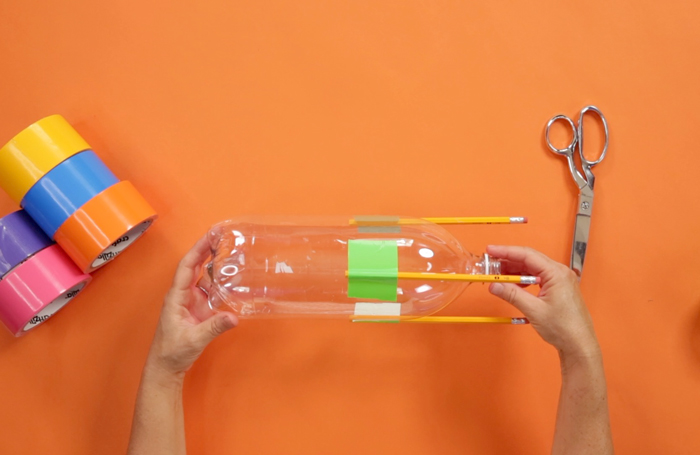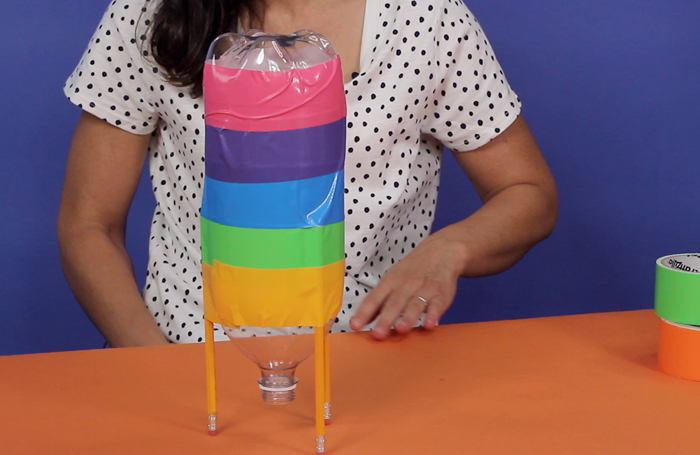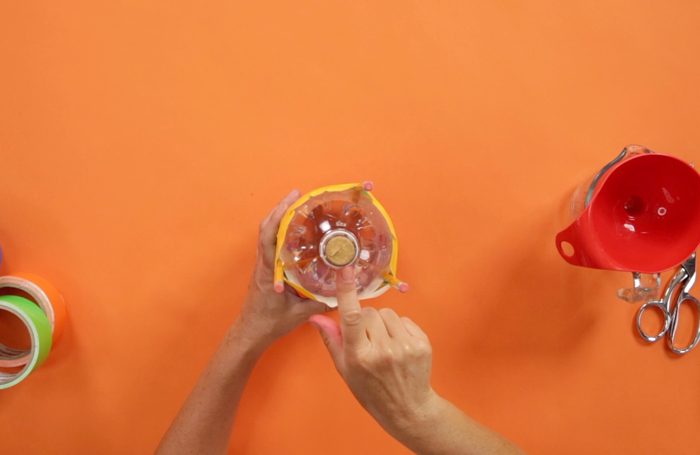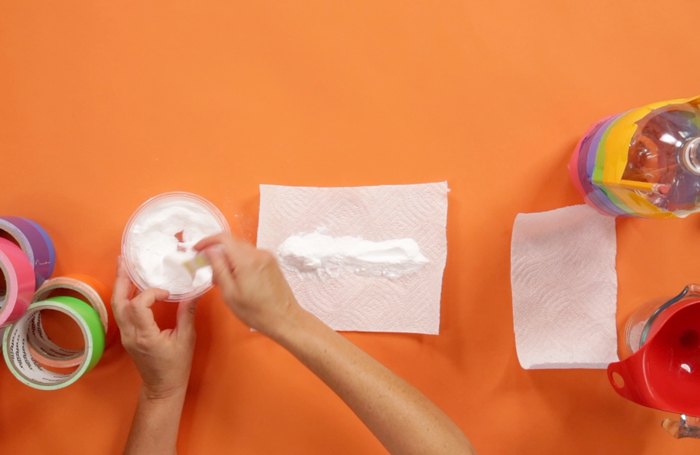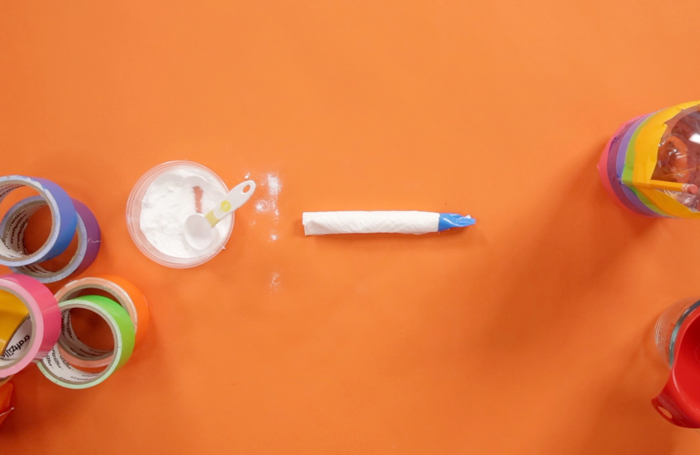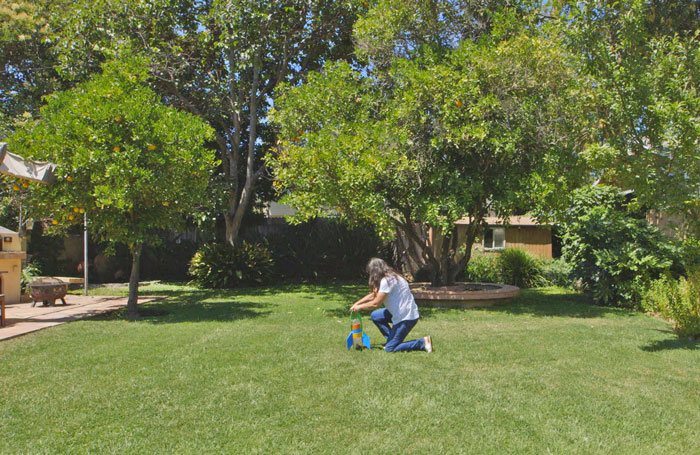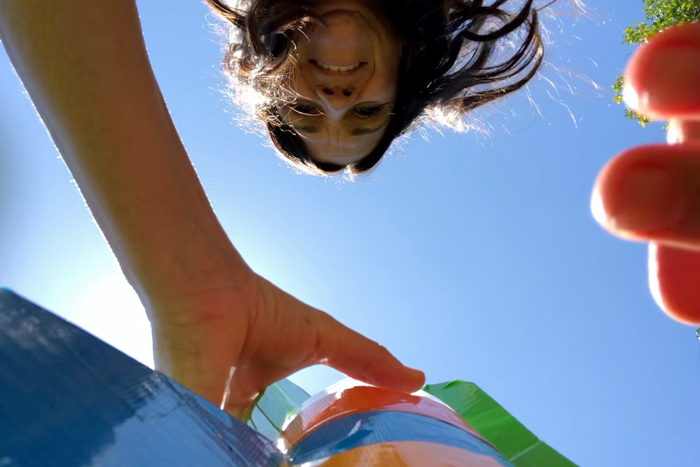How To Make Baking Soda Rockets
Never underestimate baking soda rockets. The chemical reaction used to launch Blast-Off Bottle Rockets produces enough carbon dioxide to propel the bottle high into the sky! So high that one of the three rockets I made is currently sitting in our persimmon tree 30 feet above ground. I may see it again in December when the tree loses its leaves.
This post is sponsored by Arm & Hammer. All opinions are my own.
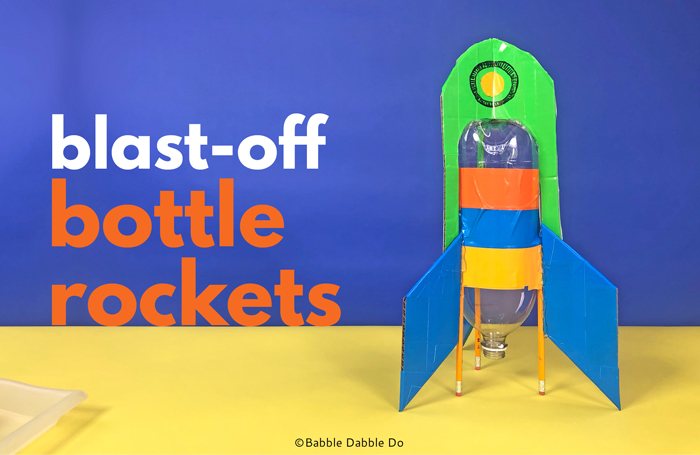
Today’s Arm & Hammer Summer Camp science project will require adult supervision at launch time. Of all the experiments we did for camp this one elicited the most gasps and excitement. I mean how can you not love the anticipation of a good rocket launch?
Today’s project is the fourth science experiment in a fantastic summer resource, Arm & Hammer Summer Camp. I’ve enjoyed being the camp science counselor so much!
Blast Off Baking Soda Rockets
Downloadable directions here
Materials
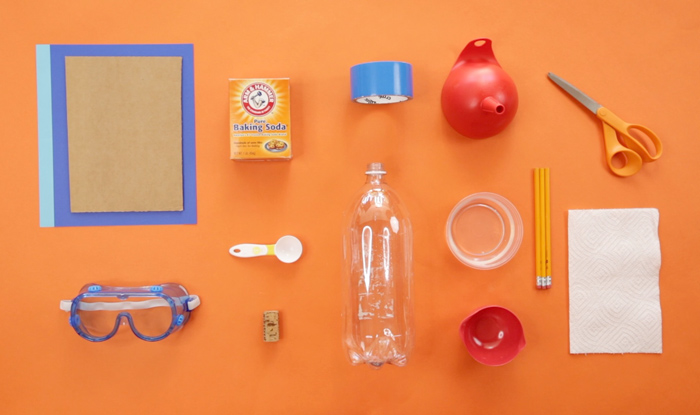
- Safety glasses
- Empty 2-liter soda bottle
- 3 tablespoons ARM & HAMMER™ Baking Soda
- 2-3 cups vinegar
- Duct tape
- 3 pencils
- Construction paper/Cardboard Use to decorate rocket
- Cork (make sure it will fit mouth of soda bottle)
- Paper towels
- Measuring cup, funnel
Instructions
Time needed: 30-45 minutes
- Make the rocket legs
Secure 3 pencils to the bottle using duct tape to make “legs” for your rocket. The bottle opening should be facing down when the bottle is placed on its legs. Make sure the legs are placed high enough to allow for 1-2” of space between the bottle opening and the flat surface below.

- Decorate the rocket
Decorate the bottle with duct tape, paper, and/or cardboard to make a rocket as desired.

- Add vinegar
Turn the bottle over so that the pencil legs are facing up. Add 2-3 cups of vinegar to the bottle and cork it. Set aside.

- Make the rocket “fuel”
Cut a paper towel into a square. Add 2-3 tablespoons of ARM & HAMMER Baking Soda onto the paper towel. Roll the paper towel tightly enough so that it will fit inside bottle opening. DON’T add it to the bottle yet!

- Tape it shut
Add duct tape to one end to keep the baking soda from spilling out.

- GO OUTSIDE!!!!
Take everything outside to clear open area.

- Launch the rocket
Adults or older kids only: I highly recommend wearing safety goggles for the following steps. Place the rocket upside down and remove the cork. Working quickly, place your paper towel packet inside the bottle and plug with cork. Turn the bottle over, place on its ’legs’ and STAND BACK! Watch as the rocket soars into the sky.

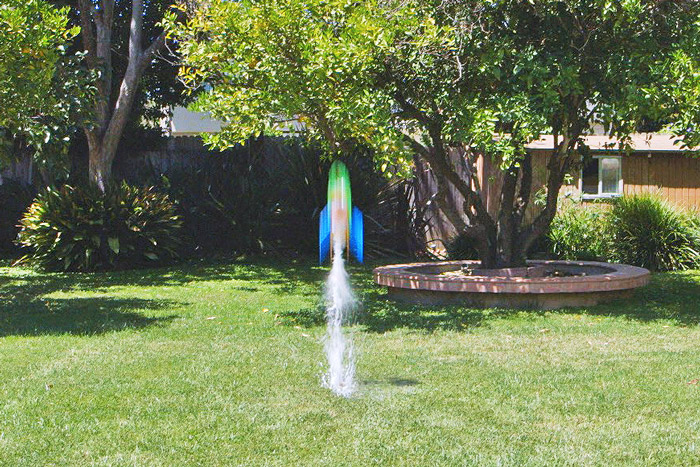
Tips
- Safety Note: It may take a moment for the reaction to build up enough gas to launch the rocket. Give it time!
- The weight of your rocket will affect how far it launches. Our rocket covered in cardboard launched about 15 feet into the air while the rocket without any decorations fellow about 30 feet high.
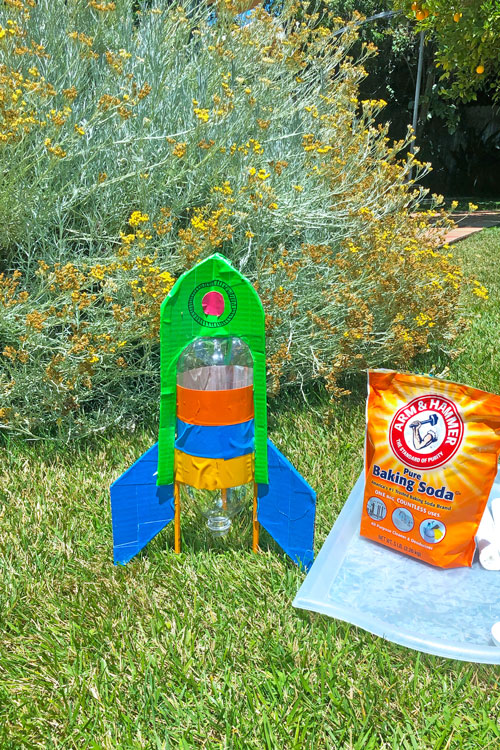
The science behind baking soda bottle rockets
Similar to yesterday’s experiment we are working with an acid base chemical reaction in this project. When the vinegar and baking soda react one of the bi-products of the reaction is the production of carbon dioxide gas.
When we cork the bottle while the reaction is occurring, the gas has nowhere to escape. It builds up inside the bottle until it reaches a point where the pressure inside the bottle is great enough to push the cork out and launch the bottle into the sky! Head over to the science section of yesterday’s post here to learn even more about what is happening in this reaction.
Conclusion
I have to admit that I had never made the classic baking soda and vinegar rockets before this. I honestly thought that the amount of gas produced in this reaction would never be enough to really launch a bottle rocket…but I was completely wrong!

